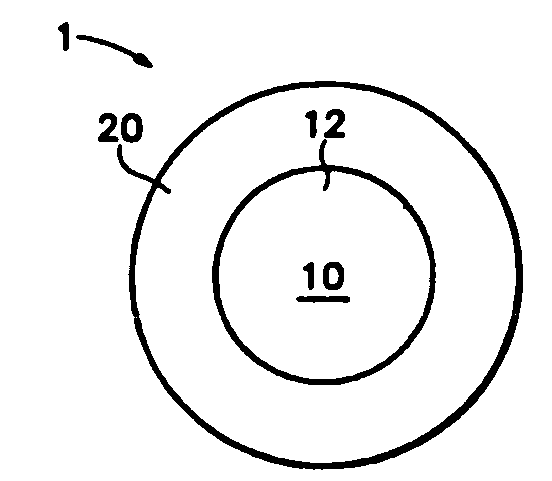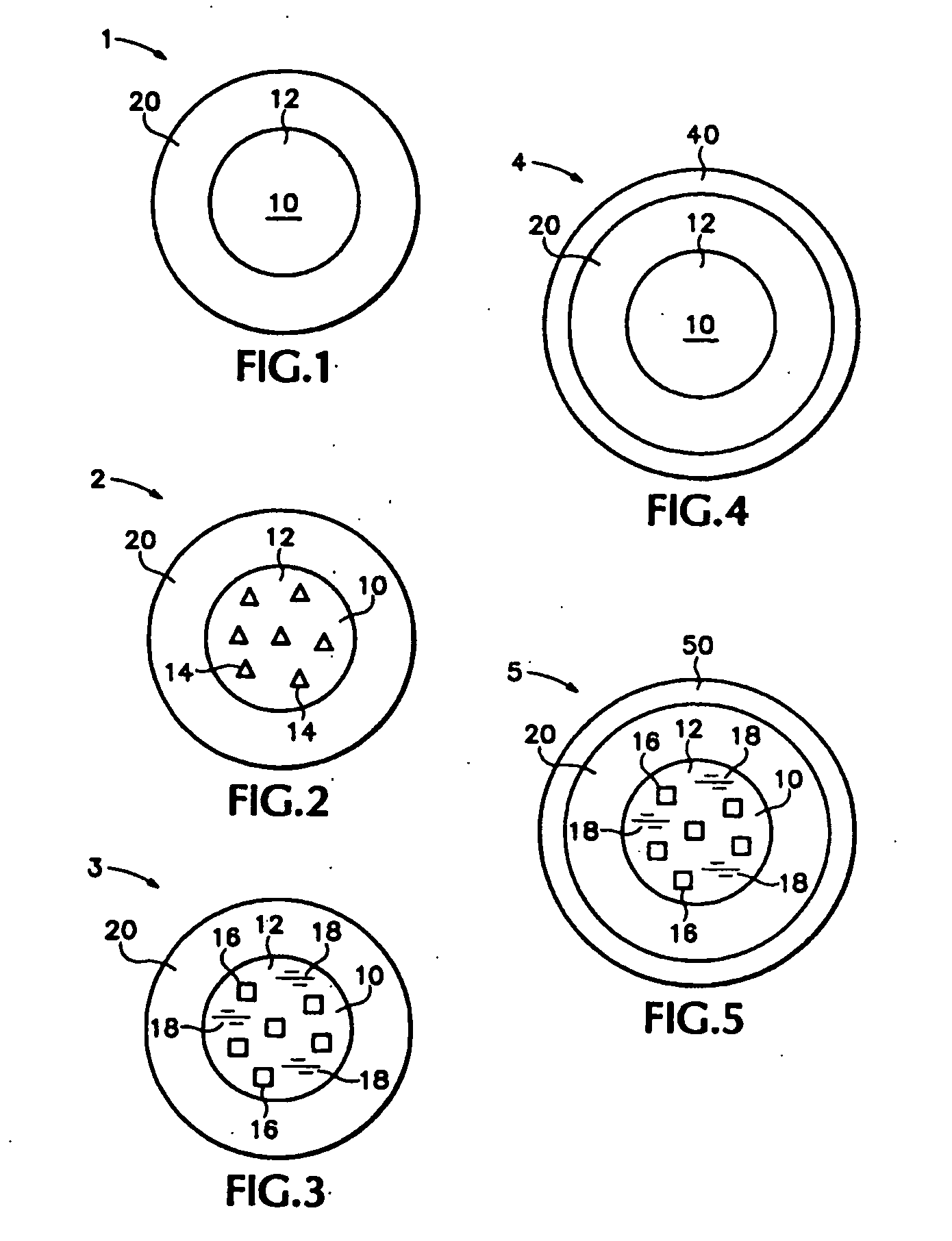Multiparticulates of spray-coated drug and polymer on a meltable core
a technology of polymer and spray coating, applied in the direction of biocide, colloidal chemistry, drug compositions, etc., can solve the problems of difficult handling of spray drying dispersions, high specific volume, and small particles resulting from spray drying process, so as to improve the dissolution of drugs and slow down the release of drugs. , the effect of increasing the dissolution ra
- Summary
- Abstract
- Description
- Claims
- Application Information
AI Technical Summary
Benefits of technology
Problems solved by technology
Method used
Image
Examples
examples
Attrition Comparison
[0166]This example demonstrates that melt-congeal cores experience less attrition during the spray-coating process than sucrose cores.
[0167]First, melt-congeal cores comprising 100 wt % gylercyl behenate (COMPRITOL 888®, a mixture of glycerol mono-, di- and tri-behenates, available from Gaffe Fosse, Paramus, N.J.) were prepared as follows. The COMPRITOL was delivered to a B&P 27-mm twin-screw extruder at a rate of 250 g / min. The extruder temperature was maintained at about 93° C. The material was then pumped using a 2.4 cc Zenith gear pump (located inside a 95° C. hot box) to the center of a 4-inch diameter spinning-disk atomizer to form multiparticulates. The surface of the spinning disk atomizer was maintained at 90° C. while making the multiparticulates, and the disk was rotating at 3000 rpm. The particles formed by the spinning-disk atomizer were congealed in ambient air and collected. The cores were sieved to obtain a fraction with a size range of 180-250 μm...
examples 1-3
[0170]These examples disclose multiparticulates of the embodiment of FIG. 1 comprising melt-congeal cores and solid amorphous dispersion layers. The inventors found that by decreasing the dispersion coating and maintaining a constant melt-congeal core size, the increasing ratio of surface area to coating mass results in increasing drug release rate.
[0171]First, melt-congeal cores comprising 100 wt % COMPRITOL 888® were prepared as follows. The COMPRITOL was added to a sealed, jacketed stainless-steel tank. Heating fluid at 90° C. was circulated through the jacket of the tank, and the COMPRITOL was melted and stirred. The COMPRITOL feed solution was pumped at a rate of about 100 g / min using a Zenith gear pump to the center of a 4-inch diameter spinning-disk atomizer rotating at 10,000 rpm, the surface of which was heated to 90° C. The particles formed by the atomizer were congealed in ambient air and collected. The cores were sieved to obtain a fraction with a size range of 63-75 μm....
example 4
[0178]This example discloses a multiparticulate of the embodiment of FIG. 1 comprising a melt-congeal core and a solid amorphous dispersion layer. This example demonstrates that multiparticulates with small cores can achieve equivalent drug release rates with higher drug loading relative to multiparticulates made from larger cores made from sugar spheres.
[0179]First, melt-congeal cores were prepared as in Example 1. The cores were sieved to obtain a fraction with a size range of 83-75 μm.
[0180]Next, a solid amorphous dispersion containing 50 wt % celecoxib and 50 wt % HPMCAS-LG was coated onto the melt congeal cores as follows. A solution was formed containing 62.5 g celecoxib (5 wt %), 62.5 g HPMCAS (5 wt %), 1061.7 g methanol (85 wt %), and 62.5 g water (5 wt %). The solution was sprayed onto 120 g of the melt congeal cores in a Mini-Glatt fluid bed coater with a Würster column, and aliquots of the coated cores were periodically removed. The spray solution was pumped into the flui...
PUM
| Property | Measurement | Unit |
|---|---|---|
| melt temperature | aaaaa | aaaaa |
| melt temperature | aaaaa | aaaaa |
| wt % | aaaaa | aaaaa |
Abstract
Description
Claims
Application Information
 Login to View More
Login to View More - R&D
- Intellectual Property
- Life Sciences
- Materials
- Tech Scout
- Unparalleled Data Quality
- Higher Quality Content
- 60% Fewer Hallucinations
Browse by: Latest US Patents, China's latest patents, Technical Efficacy Thesaurus, Application Domain, Technology Topic, Popular Technical Reports.
© 2025 PatSnap. All rights reserved.Legal|Privacy policy|Modern Slavery Act Transparency Statement|Sitemap|About US| Contact US: help@patsnap.com


